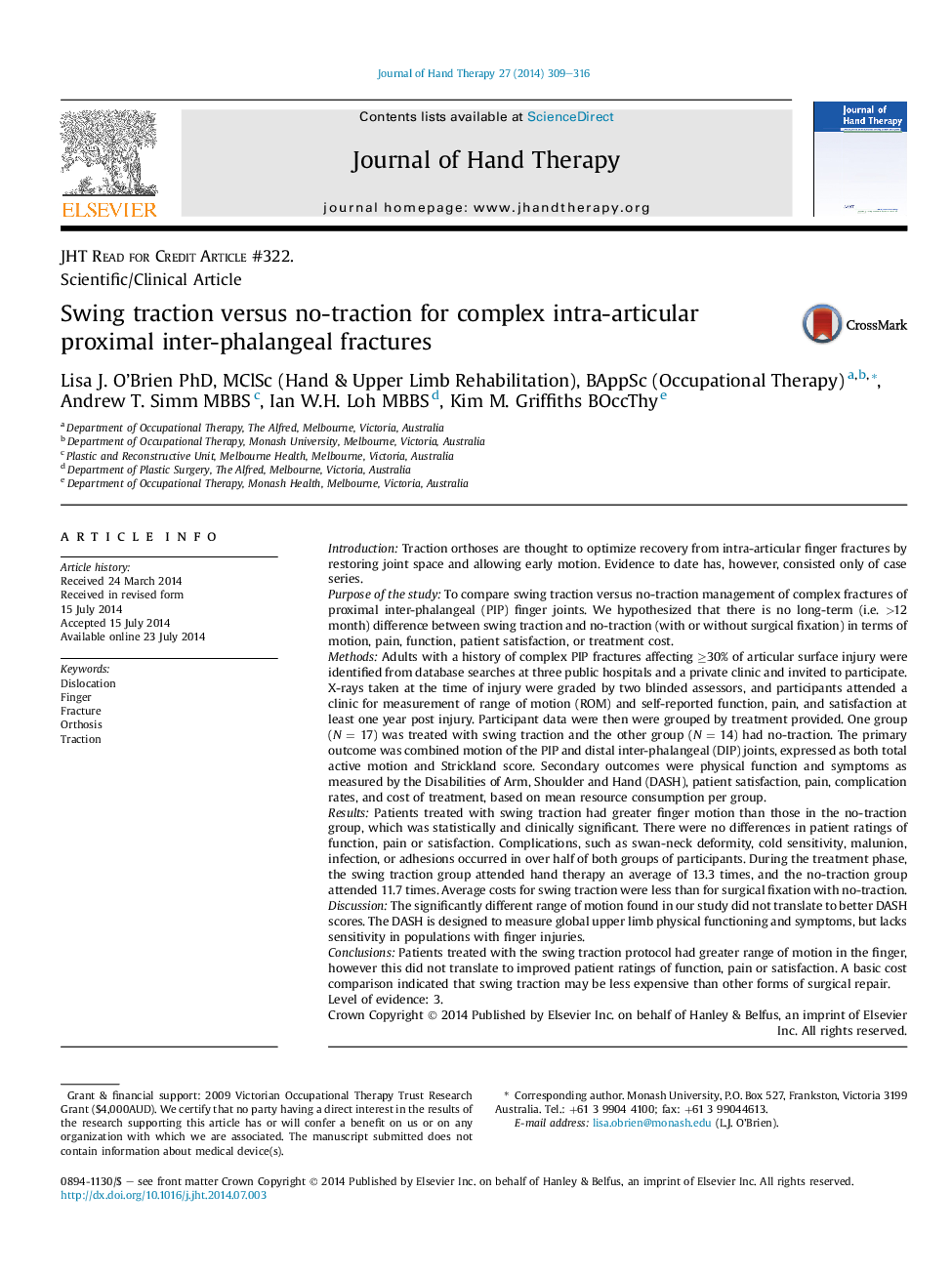| کد مقاله | کد نشریه | سال انتشار | مقاله انگلیسی | نسخه تمام متن |
|---|---|---|---|---|
| 2698182 | 1143952 | 2014 | 8 صفحه PDF | دانلود رایگان |
IntroductionTraction orthoses are thought to optimize recovery from intra-articular finger fractures by restoring joint space and allowing early motion. Evidence to date has, however, consisted only of case series.Purpose of the studyTo compare swing traction versus no-traction management of complex fractures of proximal inter-phalangeal (PIP) finger joints. We hypothesized that there is no long-term (i.e. >12 month) difference between swing traction and no-traction (with or without surgical fixation) in terms of motion, pain, function, patient satisfaction, or treatment cost.MethodsAdults with a history of complex PIP fractures affecting ≥30% of articular surface injury were identified from database searches at three public hospitals and a private clinic and invited to participate. X-rays taken at the time of injury were graded by two blinded assessors, and participants attended a clinic for measurement of range of motion (ROM) and self-reported function, pain, and satisfaction at least one year post injury. Participant data were then were grouped by treatment provided. One group (N = 17) was treated with swing traction and the other group (N = 14) had no-traction. The primary outcome was combined motion of the PIP and distal inter-phalangeal (DIP) joints, expressed as both total active motion and Strickland score. Secondary outcomes were physical function and symptoms as measured by the Disabilities of Arm, Shoulder and Hand (DASH), patient satisfaction, pain, complication rates, and cost of treatment, based on mean resource consumption per group.ResultsPatients treated with swing traction had greater finger motion than those in the no-traction group, which was statistically and clinically significant. There were no differences in patient ratings of function, pain or satisfaction. Complications, such as swan-neck deformity, cold sensitivity, malunion, infection, or adhesions occurred in over half of both groups of participants. During the treatment phase, the swing traction group attended hand therapy an average of 13.3 times, and the no-traction group attended 11.7 times. Average costs for swing traction were less than for surgical fixation with no-traction.DiscussionThe significantly different range of motion found in our study did not translate to better DASH scores. The DASH is designed to measure global upper limb physical functioning and symptoms, but lacks sensitivity in populations with finger injuries.ConclusionsPatients treated with the swing traction protocol had greater range of motion in the finger, however this did not translate to improved patient ratings of function, pain or satisfaction. A basic cost comparison indicated that swing traction may be less expensive than other forms of surgical repair.Level of evidence: 3.
Journal: Journal of Hand Therapy - Volume 27, Issue 4, October–December 2014, Pages 309–316
